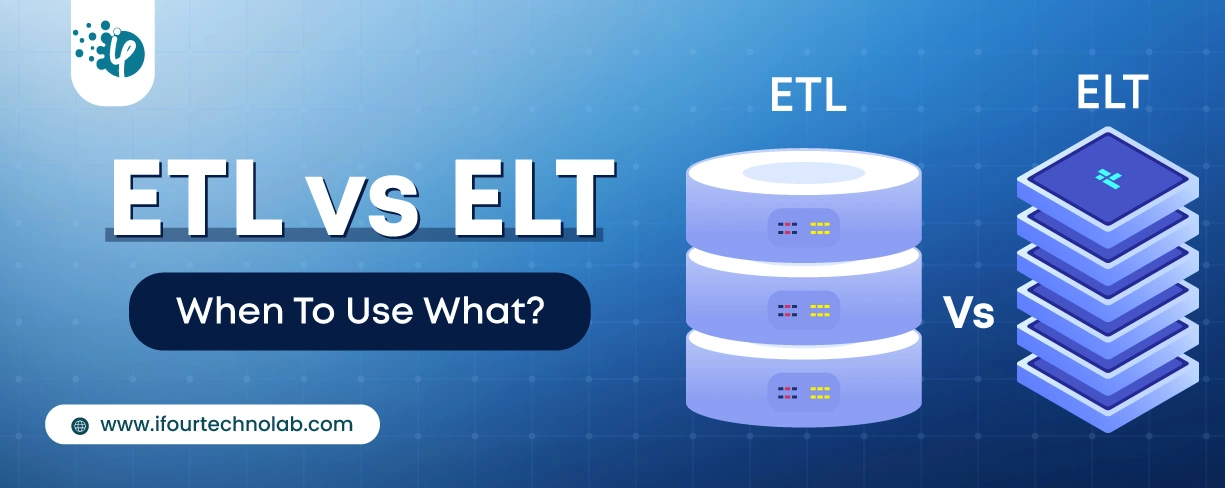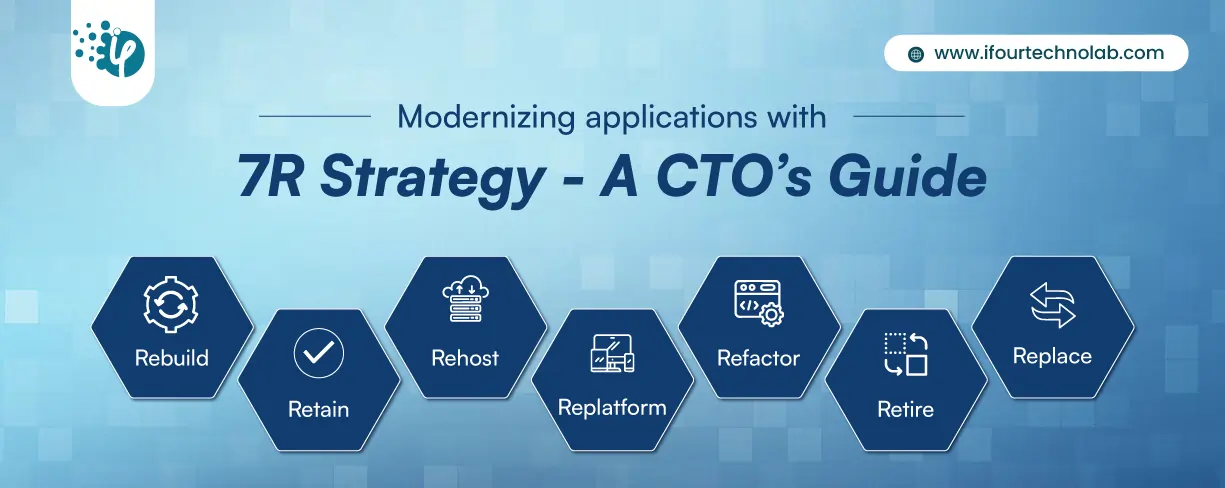ETL vs ELT: Key Differences, Benefits & Use Cases Explained
It's amazing to see how Data teams today are racing ahead - moving from traditional warehouses to cloud-native platforms, lakehouses, and real-time architectures. But in this rush,...
Listening is fun too.
Straighten your back and cherish with coffee - PLAY !

In today's rapidly evolving business landscape, digital transformation has become a necessity for organizations of all sizes. As businesses increasingly move towards cloud-based solutions, serverless computing has emerged as a popular option that provides a cost-effective and scalable solution for running applications.
Businesses may now use serverless computing in conjunction with .NET Core to build and deploy apps quicker and more efficiently than ever before, thanks to the recent release of .NET Core, a contemporary, open-source development framework. In this post, we'll look at why organizations should use serverless computing with .NET Core and how it may help them.
Let’s begin with the basics.
Serverless computing is a cloud computing architecture in which the cloud provider administers the infrastructure and distributes and grows resources as needed to execute applications, eliminating the need for developers to manage or provide servers. Basically, it is a method of developing and running applications without having to worry about the underlying infrastructure. This concept is frequently connected with Function-as-a-Service (FaaS), in which developers create code to accomplish specific functions and the cloud provider oversees their execution. Instead of paying for a predetermined number of resources all the time, developers in a serverless computing paradigm only pay for the computing resources needed during the execution of their code. It is similar to a pay-as-you-go concept for computing resources.
Infrastructure expenses were quite costly when we use dedicated physical servers to host the application and data a decade ago. Nevertheless, the Cloud allows us to pay for it as we go. In this way, we must again acquire the server or computer capabilities. Instead of using already acquired computer resources, serverless pricing is based on the number of executions.
With the adoption of Serverless computing, the application owner need not be concerned about the server's load, space, or memory. If the server requires more memory or space, the provider can raise or decrease the infrastructure necessary for the application at any time during the programmer's life.
Moreover, serverless technologies enable developers to deploy implementations fast and independently. This strategy is getting more prevalent in the corporate stack on a daily basis.
Serverless computing can be advantageous for developers who aim to shorten their app’s time to market and create lightweight, adaptable apps that can be quickly expanded or modified.
Serverless designs will lower expenses for applications that have peaks and valleys in usage, with little to no traffic in between. Investing in a server or a group of servers that are always on and accessible, even when not in use, could be a waste of money for these applications.
A serverless setup will react immediately when necessary and won't cost anything while idle.
Additionally, since doing so entails shifting some processes away from the original server, developers who want to push some or all of their application functionalities near end users for a substantially serverless design will be necessary to achieve reduced latency.
Serverless architecture can be beneficial for a variety of use cases and organizations, but it may be particularly well-suited for certain types of applications and teams. Here are some factors that might indicate that a serverless architecture would be a good fit:
Serverless architectures are a good fit for event-driven applications, where functions are triggered by events or requests. Some instances include processing user data, processing IoT data, and handling API requests.
If an application doesn't receive a lot of traffic, using a serverless architecture can save money compared to deploying and managing traditional servers.
Another platform where Serverless could be a great fit is for building microservices. These are small and independent services that work together to form an application. Each microservice may be deployed as a function, making it simple to expand and change specific components of the program without disrupting the overall operation.
Serverless architectures can be helpful for DevOps teams to simplify the deployment and management of an application. This is because the infrastructure is managed by one of the leading cloud service providers , and the team can focus on developing and deploying code rather than managing servers.
Serverless architectures can speed up development time, as developers can focus on writing code rather than worrying about the infrastructure. Additionally, they can update and deploy functions quickly, making it easy to iterate on apps and respond to changing requirements.
Platform as a Service (PaaS) and Serverless architectures are two popular cloud computing models that take distinct application development and deployment approaches. Here are the key differences between PaaS and Serverless:
To put it simply, PaaS is a more conventional way of application deployment in which the developer uses a pre-configured infrastructure to launch their application. Serverless is a more current solution that allows developers to launch their apps without worrying about the underlying infrastructure.
The image below depicts the significance of serverless architecture and its applicability in apps.
Though "serverless" computing does require servers, developers are never concerned about them. The seller oversees them. This can save expenses by minimizing the amount of money spent on DevOps and allowing developers to construct and expand their apps without being constrained by server resources.
Developers are only paid for what they use, like a "pay-as-you-go" phone plan. The code of the serverless application automatically grows up and executes only when backend activities are necessary. Resourcing that is real-time, accurate, and dynamic. Some services charge in 100-millisecond increments. In contrast, with a traditional "server-full" design, developers must anticipate how much server capacity they will require and then obtain that capacity regardless of whether they utilize it or not.
Because the application's code is not hosted on a web server, it may be executed from any location. Hence, depending on the vendor chosen, it may be feasible to perform application functionalities on servers close to the end user. Latency is minimized since the user's requests no longer need to go all the way to the originating server. Cloudflare Workers provide serverless latency reduction.
There is no need to upload code to servers or run any backend deployment to release a working version of an application utilizing a serverless infrastructure. Developers may quickly release a new product by submitting small pieces of code. Because the application is not a single dominant stack but rather a collection of functions provided by the vendor, they can upload code all at once or one function at a time.
Additionally, it enables fast software updates, fixes, corrections, or the inclusion of new features. Rather than changing the entire program, engineers may change just one function at a time.
It is difficult to replicate the serverless environment to evaluate how well the code will operate once it is deployed. Debugging becomes more challenging due to developers' lack of expertise in backend procedures and the application's division into smaller, more separate parts. The Cloudflare Workers Playground sandbox makes testing and debugging easier by reducing friction.
Since vendors control the whole backend, they may not be able to adequately evaluate its security, which can be problematic for apps that handle sensitive or secret data.
Because companies do not have their own distinct physical servers, serverless services commonly run code from several customers on a single server at the same time. This problem of sharing machinery with multiple parties is known as 'multitenancy' — imagine numerous businesses trying to lease and work in the same area at the same time. Cloud services may have an influence on application speed, and the wrong configuration of the many cloud servers may expose data. Multitenancy has minimal to no influence on networks with well-functioning play areas and solid architecture. For instance, Cloudflare manages a 15-Tbps network with enough excess capacity to prevent service disruption, and all serverless functions hosted by Cloudflare operate in their own environment.
Running an application with long-executing processes on a serverless architecture may be more expensive than in a traditional one because serverless affordable packages for time code are running. As a result, it limits the type of programs that can be swiftly and economically hosted in a serverless architecture.
Serverless programming may need to 'boot up' when it is utilized because it is not always running. Performance may suffer from this startup time. A request for this ready-to-use code is known as a "warm start." The serverless provider will keep it ready to be activated if a piece of code is requested frequently. A "cold start" is a request for code that hasn't been utilized in a while.
By utilizing the Chrome V8 engine, which can typically start up and run JavaScript code in under 5 milliseconds, Cloudflare Workers mainly avoid the cold-starting problem. The response time is less than one millisecond if the function is already running. Find out more about the the functionality of various serverless platforms
In the app development world, serverless computing has become the new normal. Businesses can now use serverless computing in conjunction with .NET Core to create and deploy apps quicker and more effectively than ever before. This might greatly help their operations and also result in cost-effectiveness.
Serverless architectures can be a good fit for applications that need to be highly scalable, responsive, and cost-effective. However, it's important to consider the specific requirements of an application and the expertise of the development team before deciding to use a serverless architecture.
This article has explored why organizations should think about implementing serverless computing with .NET Core and how it might help their operations. This will assist you in taking a step forward towards innovation and advancing your business to a new level.

It's amazing to see how Data teams today are racing ahead - moving from traditional warehouses to cloud-native platforms, lakehouses, and real-time architectures. But in this rush,...

Think about the last time CTOs spent most of their time fixing old systems. Updates were slow, servers were expensive, and adding new features took time. Now, things have changed....

According to HackerOne, fixing a security issue after software is released can cost 30 times more than fixing it during development. Today, CTOs take a different approach. Shift...